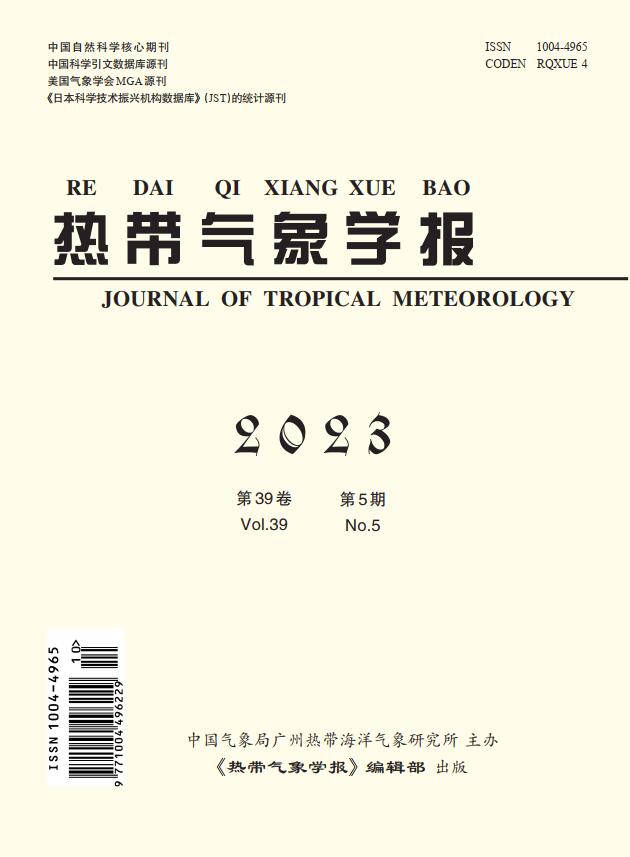Impacts of Horizontal and Vertical Resolutions on the Microphysical Structure and Boundary Layer Fluxes of Typhoon Hato (2017)
IF 1.4
4区 地球科学
Q4 METEOROLOGY & ATMOSPHERIC SCIENCES
引用次数: 1
Abstract
We set four sets of simulation experiments to explore the impacts of horizontal resolution (HR) and vertical resolution (VR) on the microphysical structure and boundary layer fluxes of tropical cyclone (TC) Hato (2017). The study shows that higher HR tends to strengthen TC. Increasing VR in the upper layers tends to weaken TC, while increasing VR in the lower layers tends to strengthen TC. Simulated amounts of all hydrometeors were larger with higher HR. Increasing VR at the upper level enhanced the mixing ratios of cloud ice and cloud snow, while increasing VR at the lower level elevated the mixing ratios of graupel and rainwater. HR has greater impact on the distributions of hydrometeors. Higher HR has a more complete ring structure of the eyewall and more concentrated hydrometeors along the cloud wall. Increasing VR at the lower level has little impact on the distribution of TC hydrometeors, while increasing VR at the upper level enhances the cloud thickness of the eyewall area. Surface latent heat flux (SLHF) is influenced greatly by resolution. Higher HR leads to larger water vapor fluxes and larger latent heat, which would result in a stronger TC. A large amount of false latent heat was generated when HR was too high, leading to an extremely strong TC, VR has a smaller impact on SLHF than HR. But increasing VR at the upper-level reduces the SLHF and weakens TC, and elevating VR at the lower-level increases the SLHF and strengthens TC. The changes in surface water vapor flux and SLHF were practically identical and the simulation results were improved when HR and VR were more coordinated. The friction velocity was greater with higher VR. Enhancing VR at the lower level increased the friction velocity, while increasing VR at the upper level reduced it.水平和垂直分辨率对台风天鸽微物理结构和边界层通量的影响(2017)
为了探讨水平分辨率(HR)和垂直分辨率(VR)对热带气旋(TC)天兔(2017)的微物理结构和边界层通量的影响,我们设置了四组模拟实验。研究表明,HR越高,TC越强。增加上层VR有减弱TC的趋势,增加下层VR有增强TC的趋势。所有水成物的模拟量随HR的增大而增大。上层VR的增加增强了云冰和云雪的混合比,下层VR的增加提高了霰和雨水的混合比。HR对水成物的分布影响较大。HR越高,眼壁环状结构越完整,沿云壁的水成物越集中。增加低层VR对TC水成物的分布影响不大,而增加上层VR会增加眼壁面积的云厚。地表潜热通量受分辨率的影响较大。HR越高,水汽通量越大,潜热越大,TC越强。HR过高时产生大量假潜热,导致TC极强,VR对SLHF的影响小于HR。而上层VR的升高使SLHF降低,TC减弱;下层VR的升高使SLHF增加,TC增强。地表水汽通量和地表水汽通量的变化基本一致,HR和VR越协调,模拟结果越好。摩擦速度随VR的增大而增大。增加下层的VR会增加摩擦速度,而增加上层的VR会降低摩擦速度。
本文章由计算机程序翻译,如有差异,请以英文原文为准。
求助全文
约1分钟内获得全文
求助全文
来源期刊

热带气象学报
METEOROLOGY & ATMOSPHERIC SCIENCES-
CiteScore
1.80
自引率
8.30%
发文量
2793
审稿时长
6-12 weeks
期刊介绍:
Information not localized
 求助内容:
求助内容: 应助结果提醒方式:
应助结果提醒方式:


